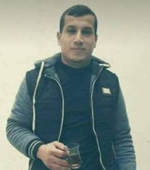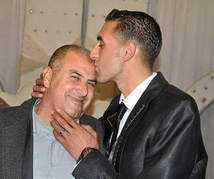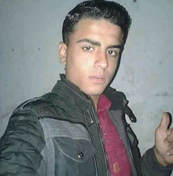30 mar 2018
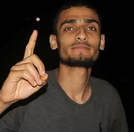
Mosab Zohair Salloul
The number of Palestinians killed in Gaza during the Land Day protests at the border fences has reached 16, according to the Palestinian Ministry of Health.
Dr. Ashraf Al-Qedra, the spokesperson of the Health Ministry in Gaza said the slain Palestinians have been identified as:
1416 Palestinians have been wounded. 758 were shot by live ammunition, 148 injured by rubber-coated steel bullets. The others were injured by tear gas, concussion grenades and other so-called ‘non-lethal’ weapons.
Israeli forces shoot dead 16 Palestinians in one day during protests in Gaza
By Friday evening, 16 Palestinians had been declared dead in Gaza as a result of Israeli fire. Fifteen of the dead were killed during massive demonstrations on the border with Israel, and one, a farmer, was killed before dawn on Friday while on his land near the border fence.
The Gaza Ministry of Health confirmed the death of 16 Palestinians and the injury of 1,416 civilians, which ranged from live bullet wounds to severe tear gas inhalation.
The slain Palestinians were identified as:
Naji Abu Hijir
Mohammed Kamal Najjar
Wahid Nasrallah Abu Samour
Amin Mansour Abu Muammar
Mohammed Naeem Abu Amr
Ahmed Ibrahim Ashour Odeh
Jihad Ahmed Fraina
Mahmoud Saadi Rahmi
Abdel Fattah Abdel Nabi
Ibrahim Salah Abu Shaar
Abd al-Qader Marhi al-Hawajri
Sari Walid Abu Odeh
Hamdan Isma'il Abu Amsha
Jihad Zuhair Abu Jamous
Bader al-Sabbagh
Omar Samour, 31 -- the farmer who was killed around dawn
Videos from the march, which was organized as a peaceful protest by activists and grassroots organizations in Gaza and later supported by local Hamas officials, show civilians being shot down by Israeli snipers who were stationed tens of meters away from the protesters, on the other side of a highly militarized fence.
Leading up to the march, the Israeli army released a statement saying it had declared the border area along Gaza a “closed military zone,” meaning that any Palestinian who got close to the border fence could risk getting shot.
The Israeli army released statements on Twitter describing the protests as “violent riots.”
“17,000 Palestinians are rioting in 5 locations along the Gaza Strip security fence. The rioters are rolling burning tires and hurling firebombs & rocks at the security fence & IDF troops, who are responding w riot dispersal means and firing towards main instigators,” the statement said.
Despite the Israeli army’s claims, Palestinian activists and leaders in the Gaza Strip have maintained that the “March of Return” was organized as a massive non-violent, weeks-long protest advocating for the return of Palestinian refugees to their original homelands in historic Palestine, now present day Israel.
Leading up to Friday, the first official day of the march -- which will continue until the 70th anniversary of the Nakba, or catastrophe, in May -- Palestinians set up tents along the border with Gaza, where protesters plan to stay until the Nakba anniversary.
The number of Palestinians killed in Gaza during the Land Day protests at the border fences has reached 16, according to the Palestinian Ministry of Health.
Dr. Ashraf Al-Qedra, the spokesperson of the Health Ministry in Gaza said the slain Palestinians have been identified as:
- Wahid Nasrallah Abu Sammour, 27, Khan Younis, southern Gaza.
- Mohammad Kamal Najjar, 25, Jabalia, northern Gaza.
- Mohammad Naim Abu Amro, 27, Sheja’eyya, Gaza city.
- Amin Mansour Abu Moammar, Rafah, southern Gaza.
- Ibrahim Abu Sha’ar, 22, Rafah.
- Abdul-Fattah Bahjat Abdul-Nabi, 18, Beit Lahia, northern Gaza.
- Mahmoud Sa’adi Rohmi, 33, Gaza.
- Sari Waleed Abu Odah, Beit Hanoun, northern Gaza.
- Hamdan Ismael Abu Amsha.
- Jihad Ahmad Freina, 34, east of Gaza city.
- Ahmad Ibrahim Ashour Odah, 16, northern Gaza.
- Abdul-Qader Merdhi al-Hawajri, 42, Nusseirat refugee camp, central Gaza.
- Jihad Zoheir Abu Jamous, 30, Khan Younis.
- Bader Faeq as-Sabagh, 21, Jabalia.
- Naji Abdullah Abu Hjeir, 25, al-Boreij, central Gaza.
- Mosab Zohair Salloul (still unconfirmed, his body has not been recovered)
1416 Palestinians have been wounded. 758 were shot by live ammunition, 148 injured by rubber-coated steel bullets. The others were injured by tear gas, concussion grenades and other so-called ‘non-lethal’ weapons.
Israeli forces shoot dead 16 Palestinians in one day during protests in Gaza
By Friday evening, 16 Palestinians had been declared dead in Gaza as a result of Israeli fire. Fifteen of the dead were killed during massive demonstrations on the border with Israel, and one, a farmer, was killed before dawn on Friday while on his land near the border fence.
The Gaza Ministry of Health confirmed the death of 16 Palestinians and the injury of 1,416 civilians, which ranged from live bullet wounds to severe tear gas inhalation.
The slain Palestinians were identified as:
Naji Abu Hijir
Mohammed Kamal Najjar
Wahid Nasrallah Abu Samour
Amin Mansour Abu Muammar
Mohammed Naeem Abu Amr
Ahmed Ibrahim Ashour Odeh
Jihad Ahmed Fraina
Mahmoud Saadi Rahmi
Abdel Fattah Abdel Nabi
Ibrahim Salah Abu Shaar
Abd al-Qader Marhi al-Hawajri
Sari Walid Abu Odeh
Hamdan Isma'il Abu Amsha
Jihad Zuhair Abu Jamous
Bader al-Sabbagh
Omar Samour, 31 -- the farmer who was killed around dawn
Videos from the march, which was organized as a peaceful protest by activists and grassroots organizations in Gaza and later supported by local Hamas officials, show civilians being shot down by Israeli snipers who were stationed tens of meters away from the protesters, on the other side of a highly militarized fence.
Leading up to the march, the Israeli army released a statement saying it had declared the border area along Gaza a “closed military zone,” meaning that any Palestinian who got close to the border fence could risk getting shot.
The Israeli army released statements on Twitter describing the protests as “violent riots.”
“17,000 Palestinians are rioting in 5 locations along the Gaza Strip security fence. The rioters are rolling burning tires and hurling firebombs & rocks at the security fence & IDF troops, who are responding w riot dispersal means and firing towards main instigators,” the statement said.
Despite the Israeli army’s claims, Palestinian activists and leaders in the Gaza Strip have maintained that the “March of Return” was organized as a massive non-violent, weeks-long protest advocating for the return of Palestinian refugees to their original homelands in historic Palestine, now present day Israel.
Leading up to Friday, the first official day of the march -- which will continue until the 70th anniversary of the Nakba, or catastrophe, in May -- Palestinians set up tents along the border with Gaza, where protesters plan to stay until the Nakba anniversary.
|
|
|
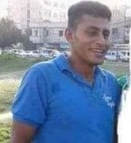
Jihad Zoheir Abu Jamous, 30
The number of Palestinians killed in Gaza during the Land Day protests at the border fences has reached 15, according to the Palestinian Ministry of Health.
The latest casualties have been identified as:
Bader Faeq as-Sabagh
Naji Abdullah Abu Hjeir, 25, al-Boreij, central Gaza.
1416 Palestinians have been wounded. 758 were shot by live ammunition, 148 injured by rubber-coated steel bullets. The others were injured by tear gas, concussion grenades and other so-called ‘non-lethal’ weapons.
Updated from: The Palestinian Health Ministry in the Gaza Strip has reported that Israeli soldiers killed, Friday, thirteen Palestinians, and injured at least 1272, including many who suffered serious wounds, in several parts of the Gaza Strip.
The latest casualties at the time of this report has been identified as Jihad Zoheir Abu Jamous, 30, who was shot with a live round in the head, in Khan Younis.
At least twenty of the wounded Palestinians suffered life-threatening injuries, especially since the soldiers used exploding bullets.
The Israeli army resorted to the excessive use of force against the nonviolent protesters who marched only carrying Palestinian flags, by firing dozens of live rounds at them, in addition to rubber-coated steel bullets, gas bombs and concussion grenades.
Dr. Ashraf Al-Qedra, the spokesperson of the Health Ministry in Gaza said the slain Palestinians have been identified as:
The number of Palestinians killed in Gaza during the Land Day protests at the border fences has reached 15, according to the Palestinian Ministry of Health.
The latest casualties have been identified as:
Bader Faeq as-Sabagh
Naji Abdullah Abu Hjeir, 25, al-Boreij, central Gaza.
1416 Palestinians have been wounded. 758 were shot by live ammunition, 148 injured by rubber-coated steel bullets. The others were injured by tear gas, concussion grenades and other so-called ‘non-lethal’ weapons.
Updated from: The Palestinian Health Ministry in the Gaza Strip has reported that Israeli soldiers killed, Friday, thirteen Palestinians, and injured at least 1272, including many who suffered serious wounds, in several parts of the Gaza Strip.
The latest casualties at the time of this report has been identified as Jihad Zoheir Abu Jamous, 30, who was shot with a live round in the head, in Khan Younis.
At least twenty of the wounded Palestinians suffered life-threatening injuries, especially since the soldiers used exploding bullets.
The Israeli army resorted to the excessive use of force against the nonviolent protesters who marched only carrying Palestinian flags, by firing dozens of live rounds at them, in addition to rubber-coated steel bullets, gas bombs and concussion grenades.
Dr. Ashraf Al-Qedra, the spokesperson of the Health Ministry in Gaza said the slain Palestinians have been identified as:
- Wahid Nasrallah Abu Sammour, 27, Khan Younis, southern Gaza.
- Mohammad Kamal Najjar, 25, Jabalia, northern Gaza.
- Mohammad Naim Abu Amro, 27, Sheja’eyya, Gaza city.
- Amin Mansour Abu Moammar, Rafah, southern Gaza.
- Ibrahim Abu Sha’ar, 22, Rafah.
- Abdul-Fattah Bahjat Abdul-Nabi, 18, Beit Lahia, northern Gaza.
- Mahmoud Sa’adi Rohmi, 33, Gaza.
- Sari Waleed Abu Odah, Beit Hanoun, northern Gaza.
- Hamdan Ismael Abu Amsha.
- Jihad Ahmad Freina, 34, east of Gaza city.
- Ahmad Ibrahim Ashour Odah, 16, northern Gaza.
- Abdul-Qader Merdhi al-Hawajri, 42, Nusseirat refugee camp, central Gaza.
- Jihad Zoheir Abu Jamous, 30, Khan Younis.
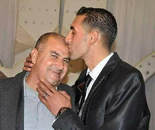
Wahid Sammour was the first to be killed earlier on Friday, while working on his own farmland, when the soldiers fired shells into lands, east of Khan Younis.
Furthermore, hospitals and medical centers across the Gaza Strip issued urgent appeals to the Palestinians to donate blood for the wounded.
As the protests continue across the besieged Gaza Strip, the Israeli army also fired shells at a site east of the al-Boreij refugee camp, in central Gaza, and another site, southeast of Gaza city.
In Ramallah, in central West Bank, the soldiers injured dozens of nonviolent Palestinian protesters, at the northern entrance of al-Biereh city.
The soldiers also attacked dozens of nonviolent protesters on Budrus, west of Ramallah, wounding many Palestinians.
Also in Ramallah, the soldiers shot three Palestinians with live fire, and caused dozens to suffer the effects of teargas inhalation, after the army resorted to the excessive use of force against nonviolent protesters in Nabi Saleh village, north of the city.
Two Palestinians were also shot with live fire, after the army attacked protesters on their lands, near the illegal Halamish Israeli colony, which was built of lands owned by villagers of Deir Nitham, west of Ramallah.
In Nabi Saleh village, northwest of Ramallah, the soldiers attacked dozens of protesters, and fired dozens of gas bombs at them.
In Bil’in village, west of Ramallah, dozens of Palestinians, accompanied by Israel and international peace activists, held the weekly procession against the Annexation Wall and Colonies, and protesting the ongoing occupation, and the illegal American recognition of occupied Jerusalem as the unified capital of Israel.
In addition, the soldiers attacked nonviolent protesters in Qusra village, southeast of the northern West Bank city of Nablus, while they marched carrying olive branches to plant them in their lands.
The soldiers also attacked nonviolent protesters in Hebron and abducted at least two Palestinians.
In addition, the soldiers shot a Palestinian child with live fire in his leg, after the army invaded the al-Lubban ash-Sharqiya village, south of the northern West Bank city of Nablus.
Today, marks the 42nd Anniversary of the Palestinian Land Day, when Israel illegally annexed 21000 Dunams of Palestinian lands, and issued “Absentee Property Law” which allowed it to confiscate the lands of displaced Palestinians.
The army invaded many villages and towns and killed six Palestinians on that day (March 30, 1976) in various parts of occupied historic Palestine, and the Palestinians started marking it since then, expressing their determination and steadfastness in their struggle for liberation.
Palestinian President Mahmoud Abbas declared Saturday a national day of mourning in response to the killing of the nonviolent protesters.
Furthermore, hospitals and medical centers across the Gaza Strip issued urgent appeals to the Palestinians to donate blood for the wounded.
As the protests continue across the besieged Gaza Strip, the Israeli army also fired shells at a site east of the al-Boreij refugee camp, in central Gaza, and another site, southeast of Gaza city.
In Ramallah, in central West Bank, the soldiers injured dozens of nonviolent Palestinian protesters, at the northern entrance of al-Biereh city.
The soldiers also attacked dozens of nonviolent protesters on Budrus, west of Ramallah, wounding many Palestinians.
Also in Ramallah, the soldiers shot three Palestinians with live fire, and caused dozens to suffer the effects of teargas inhalation, after the army resorted to the excessive use of force against nonviolent protesters in Nabi Saleh village, north of the city.
Two Palestinians were also shot with live fire, after the army attacked protesters on their lands, near the illegal Halamish Israeli colony, which was built of lands owned by villagers of Deir Nitham, west of Ramallah.
In Nabi Saleh village, northwest of Ramallah, the soldiers attacked dozens of protesters, and fired dozens of gas bombs at them.
In Bil’in village, west of Ramallah, dozens of Palestinians, accompanied by Israel and international peace activists, held the weekly procession against the Annexation Wall and Colonies, and protesting the ongoing occupation, and the illegal American recognition of occupied Jerusalem as the unified capital of Israel.
In addition, the soldiers attacked nonviolent protesters in Qusra village, southeast of the northern West Bank city of Nablus, while they marched carrying olive branches to plant them in their lands.
The soldiers also attacked nonviolent protesters in Hebron and abducted at least two Palestinians.
In addition, the soldiers shot a Palestinian child with live fire in his leg, after the army invaded the al-Lubban ash-Sharqiya village, south of the northern West Bank city of Nablus.
Today, marks the 42nd Anniversary of the Palestinian Land Day, when Israel illegally annexed 21000 Dunams of Palestinian lands, and issued “Absentee Property Law” which allowed it to confiscate the lands of displaced Palestinians.
The army invaded many villages and towns and killed six Palestinians on that day (March 30, 1976) in various parts of occupied historic Palestine, and the Palestinians started marking it since then, expressing their determination and steadfastness in their struggle for liberation.
Palestinian President Mahmoud Abbas declared Saturday a national day of mourning in response to the killing of the nonviolent protesters.
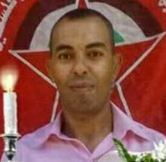
Abd al-Qader al-Hawajri 42
Israeli forces shot dead 14 Palestinians and injured over a 1,000 more along the Gaza border on Friday, as thousands of Palestinians demonstrated in “The Great March of Return” on the 42nd anniversary of Land Day.
The Palestinian Ministry of Health in Gaza confirmed that 14 Palestinians were killed on Friday. They were identified as:
Israeli forces shot dead 14 Palestinians and injured over a 1,000 more along the Gaza border on Friday, as thousands of Palestinians demonstrated in “The Great March of Return” on the 42nd anniversary of Land Day.
The Palestinian Ministry of Health in Gaza confirmed that 14 Palestinians were killed on Friday. They were identified as:
- Mohammad Kamel Najjar
- Wahid Nasrallah Abu Samour
- Mahmoud Abu Muammar
- Mohammad Abu Amro
- Amhad Ibrahim Odah
- Jihad Farina
- Mahmoud Rahmi
- Ibrahim Abu Shaer
- Abd al-Fattah Bahjat Abd al-Nabi
- Abd al-Qader al-Hawajri
- Sari Walid Abu Odah
- Hamdan Ismail Abu Amsha
- Omar Samour
- Bader Fayek al-Sabbagh
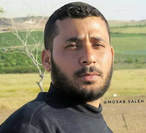
Sari Walid Abu Odah
The ministry added that 1,272 Palestinians were injured. While the majority suffered from severe tear-gas inhalation, tens of Palestinians were injured with live ammunition, some critically.
The ministry called on Palestinians across Gaza to donate blood at hospitals.
Leading up to the march, the Israeli army released a statement saying it had declared the border area along Gaza a “closed military zone,” meaning that any Palestinian who got close to the border fence could risk getting shot.
The ministry added that 1,272 Palestinians were injured. While the majority suffered from severe tear-gas inhalation, tens of Palestinians were injured with live ammunition, some critically.
The ministry called on Palestinians across Gaza to donate blood at hospitals.
Leading up to the march, the Israeli army released a statement saying it had declared the border area along Gaza a “closed military zone,” meaning that any Palestinian who got close to the border fence could risk getting shot.
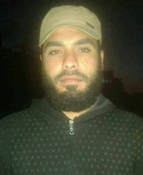
Hamdan Ismail Abu Amsha
The Israeli army released statements on Twitter describing the protests as “violent riots.”
“17,000 Palestinians are rioting in 5 locations along the Gaza Strip security fence. The rioters are rolling burning tires and hurling firebombs & rocks at the security fence & IDF troops, who are responding w riot dispersal means and firing towards main instigators,” the statement said.
The Israeli army released statements on Twitter describing the protests as “violent riots.”
“17,000 Palestinians are rioting in 5 locations along the Gaza Strip security fence. The rioters are rolling burning tires and hurling firebombs & rocks at the security fence & IDF troops, who are responding w riot dispersal means and firing towards main instigators,” the statement said.
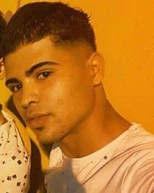
Bader Fayek al-Sabbagh 22
Despite the Israeli army’s claims, Palestinian activists and leaders in the Gaza Strip have maintained that the “March of Return” was organized as a massive non-violent, weeks-long protest advocating for the return of Palestinian refugees to their original homelands in historic Palestine, now present day Israel.
Leading up to Friday, the first official day of the march -- which will continue until the 70th anniversary of the Nakba, or catastrophe, in May -- Palestinians set up tents along the border with Gaza, where protesters plan to stay until the Nakba anniversary.
Despite the Israeli army’s claims, Palestinian activists and leaders in the Gaza Strip have maintained that the “March of Return” was organized as a massive non-violent, weeks-long protest advocating for the return of Palestinian refugees to their original homelands in historic Palestine, now present day Israel.
Leading up to Friday, the first official day of the march -- which will continue until the 70th anniversary of the Nakba, or catastrophe, in May -- Palestinians set up tents along the border with Gaza, where protesters plan to stay until the Nakba anniversary.
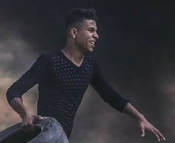
Abd al-Fattah abd al-Nabi 22
Israeli forces shot and killed a 22-year-old Palestinian from Gaza on Friday afternoon, bringing the death toll to eight, as thousands of Palestinians took to the border with Israel in what is being called "The Great March of Return," as Palestinian refugees demand their right to return to their homelands inside historic Palestine, now present-day Israel.
Ashraf al-Qidra, the spokesman for the Gaza Ministry of Health released a statement identifying the eight slain Palestinian as Abd al-Fattah abd al-Nabi. Video
Meanwhile, al-Qidra reported that over 500 Palestinians had been injured.
Israeli forces shot and killed a 22-year-old Palestinian from Gaza on Friday afternoon, bringing the death toll to eight, as thousands of Palestinians took to the border with Israel in what is being called "The Great March of Return," as Palestinian refugees demand their right to return to their homelands inside historic Palestine, now present-day Israel.
Ashraf al-Qidra, the spokesman for the Gaza Ministry of Health released a statement identifying the eight slain Palestinian as Abd al-Fattah abd al-Nabi. Video
Meanwhile, al-Qidra reported that over 500 Palestinians had been injured.
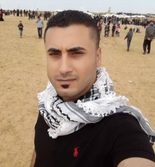
Mahmoud Saadi Rahmi 33
Around 3:15p.m. the ministry reported that Jihad Freineh, 33, from Gaza City was killed.
Minutes later, the ministry reported that the seventh Palestinian had been killed by Israeli forces. He was identified as Mahmoud Saadi Rahmi, from Gaza City.
Around 3:15p.m. the ministry reported that Jihad Freineh, 33, from Gaza City was killed.
Minutes later, the ministry reported that the seventh Palestinian had been killed by Israeli forces. He was identified as Mahmoud Saadi Rahmi, from Gaza City.
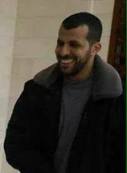
Jihad Freineh, 33
Around 3:15p.m. the ministry reported that Jihad Freineh, 33, was killed.
Leading up to the march, the Israeli army released a statement saying it had declared the border area along Gaza a “closed military zone,” meaning that any Palestinian who got close to the border fence could risk getting shot.
Around 3:15p.m. the ministry reported that Jihad Freineh, 33, was killed.
Leading up to the march, the Israeli army released a statement saying it had declared the border area along Gaza a “closed military zone,” meaning that any Palestinian who got close to the border fence could risk getting shot.
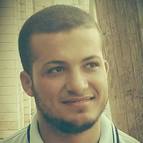
Ahmad Ibrahim Odeh 16
Four Palestinians have been killed b y Israeli forces and dozens more injured since early Friday morning, as thousands of Gazans took to the borders with Israel as part of “The Great March of Return” taking place across the besieged coastal enclave to mark the 41st Land Day.
In 1976, Israeli police shot and killed six Palestinian citizens of Israel as they were protesting the Israeli government's expropriation of thousands of dunums of Palestinian land. Since then, Palestinians have commemorated March 30 as Land Day with mass protests across the ocupied West Bank and East Jerusalem, Gaza, and inside Israel.
Four Palestinians have been killed b y Israeli forces and dozens more injured since early Friday morning, as thousands of Gazans took to the borders with Israel as part of “The Great March of Return” taking place across the besieged coastal enclave to mark the 41st Land Day.
In 1976, Israeli police shot and killed six Palestinian citizens of Israel as they were protesting the Israeli government's expropriation of thousands of dunums of Palestinian land. Since then, Palestinians have commemorated March 30 as Land Day with mass protests across the ocupied West Bank and East Jerusalem, Gaza, and inside Israel.
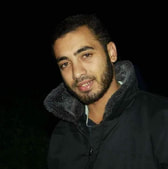
Mohammad Abu Amro 27
A Palestinian farmer was killed around dawn and another was injured as Israeli forces targeted the southern Gazan district of Khan Younis with mortar shells.
Spokesperson of the Gaza Ministry of Health, Ashraf al-Qidra, identified the slain farmer as Omar Sammour, 31, adding that another Palestinian, whose identity remained unknown, was injured during the shelling.
Israeli media reported that Sammour and the other man with him were targeted for approaching the border fence with Israel in a “suspicious manner,” though local sources reported that Sammour was simply gathering crops from his land to sell later in the day.
On Friday afternoon, medical sources confirmed to Ma’an that two more Palestinians were killed during the protest along the border.
One of the slain Palestinians was identified as Amin Mahmoud Muhammar from Rafah in southern Gaza. His age remained unknown.
The other slain Palestinian was identified as Muhammad Kamal al-Najjar, 25, from eastern Jabaliya in northern Gaza.
Around 2:20 p.m. medical sources told Ma’an that a fourth Palestinian had been killed. He was identified as Muhammad Abu Omar, 19.
Fifteen minutes later, the Gaza Ministry of Health confirmed that a fifth Palestinian had been killed. He was identified as 16-year-old Ahmad Ibrahim Odeh from the northern Gaza Strip.
Leading up to the march, the Israeli army released a statement saying it had declared the border area along Gaza a “closed military zone,” meaning that any Palestinian who got close to the border fence could risk getting shot.
The Israeli army released statements on Twitter describing the protests as “violent riots.”
“17,000 Palestinians are rioting in 5 locations along the Gaza Strip security fence. The rioters are rolling burning tires and hurling firebombs & rocks at the security fence & IDF troops, who are responding w riot dispersal means and firing towards main instigators,” the statement said.
Despite the Israeli army’s claims, Palestinian activists and leaders in the Gaza Strip have maintained that the “March of Return” was organized as a massive non-violent, weeks-long protest advocating for the return of Palestinian refugees to their original homelands in historic Palestine, now present day Israel.
Leading up to Friday, the first official day of the march -- which will continue until the 70th anniversary of the Nakba, or catastrophe, in May -- Palestinians set up tents along the border with Gaza, where protesters plan to stay until the Nakba anniversary.
Ismail Haniyeh, head of the Hamas politburo, gave a speech at the March of Return, saying it "demonstrates that there are no alternatives to Palestine and the right of return (for the Palestinian people)," praising the people who left their homes to attend the march.
When speaking about the goal of the march, Haniyeh said it constitutes "the beginning of a return (of the Palestinian people) to the entirety of the land of Palestine."
"We will not give up and we will not bargain with the Zionist entity over even a small piece of the land of Palestine," Haniyeh continued, stressing that the Palestinians will reject any deal proposed by the Trump administration.
"Our people went out today to make it clear that we will not give up Jerusalem and that there is no alternative to Palestine and the right of return. We will not accept the right of return staying only a slogan.”
A Palestinian farmer was killed around dawn and another was injured as Israeli forces targeted the southern Gazan district of Khan Younis with mortar shells.
Spokesperson of the Gaza Ministry of Health, Ashraf al-Qidra, identified the slain farmer as Omar Sammour, 31, adding that another Palestinian, whose identity remained unknown, was injured during the shelling.
Israeli media reported that Sammour and the other man with him were targeted for approaching the border fence with Israel in a “suspicious manner,” though local sources reported that Sammour was simply gathering crops from his land to sell later in the day.
On Friday afternoon, medical sources confirmed to Ma’an that two more Palestinians were killed during the protest along the border.
One of the slain Palestinians was identified as Amin Mahmoud Muhammar from Rafah in southern Gaza. His age remained unknown.
The other slain Palestinian was identified as Muhammad Kamal al-Najjar, 25, from eastern Jabaliya in northern Gaza.
Around 2:20 p.m. medical sources told Ma’an that a fourth Palestinian had been killed. He was identified as Muhammad Abu Omar, 19.
Fifteen minutes later, the Gaza Ministry of Health confirmed that a fifth Palestinian had been killed. He was identified as 16-year-old Ahmad Ibrahim Odeh from the northern Gaza Strip.
Leading up to the march, the Israeli army released a statement saying it had declared the border area along Gaza a “closed military zone,” meaning that any Palestinian who got close to the border fence could risk getting shot.
The Israeli army released statements on Twitter describing the protests as “violent riots.”
“17,000 Palestinians are rioting in 5 locations along the Gaza Strip security fence. The rioters are rolling burning tires and hurling firebombs & rocks at the security fence & IDF troops, who are responding w riot dispersal means and firing towards main instigators,” the statement said.
Despite the Israeli army’s claims, Palestinian activists and leaders in the Gaza Strip have maintained that the “March of Return” was organized as a massive non-violent, weeks-long protest advocating for the return of Palestinian refugees to their original homelands in historic Palestine, now present day Israel.
Leading up to Friday, the first official day of the march -- which will continue until the 70th anniversary of the Nakba, or catastrophe, in May -- Palestinians set up tents along the border with Gaza, where protesters plan to stay until the Nakba anniversary.
Ismail Haniyeh, head of the Hamas politburo, gave a speech at the March of Return, saying it "demonstrates that there are no alternatives to Palestine and the right of return (for the Palestinian people)," praising the people who left their homes to attend the march.
When speaking about the goal of the march, Haniyeh said it constitutes "the beginning of a return (of the Palestinian people) to the entirety of the land of Palestine."
"We will not give up and we will not bargain with the Zionist entity over even a small piece of the land of Palestine," Haniyeh continued, stressing that the Palestinians will reject any deal proposed by the Trump administration.
"Our people went out today to make it clear that we will not give up Jerusalem and that there is no alternative to Palestine and the right of return. We will not accept the right of return staying only a slogan.”
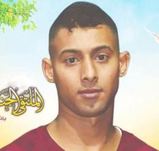
Mohammad Kamel Najjar, 25
The Palestinian Red Crescent Society (PRC) has reported that Israeli soldiers killed, Friday, two Palestinians in the ongoing processions across the Gaza Strip, and injured at least ninety others, including three who suffered serious wounds. Earlier Friday, the soldiers killed a farmer in Khan Younis.
The PRC said the soldiers killed a young man, identified as Mohammad Kamel Najjar, 25, with a live fire, east of Jabalia, in northern Gaza.
Mohammad was from Tal az-Za’tar area, in northern Gaza; eyewitnesses said the soldiers fired live rounds directly targeting him.
The Palestinian Red Crescent Society (PRC) has reported that Israeli soldiers killed, Friday, two Palestinians in the ongoing processions across the Gaza Strip, and injured at least ninety others, including three who suffered serious wounds. Earlier Friday, the soldiers killed a farmer in Khan Younis.
The PRC said the soldiers killed a young man, identified as Mohammad Kamel Najjar, 25, with a live fire, east of Jabalia, in northern Gaza.
Mohammad was from Tal az-Za’tar area, in northern Gaza; eyewitnesses said the soldiers fired live rounds directly targeting him.
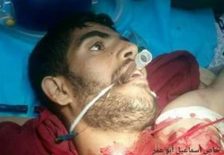
Amin Mahmoud Moammar, 38
Furthermore, the soldiers killed Amin Mahmoud Moammar, 38, from Rafah, in the southern part of the Gaza Strip, also after shooting him with live fire.
The PRC added that at least 54 Palestinians were shot with live fire, and dozens suffered the effects of teargas inhalation.
Among the wounded Palestinians are ten, including a young woman, who were shot with live fire, east of the Zeitoun neighborhood, southeast of Gaza city; most of them were shot in their legs, and suffered moderate injuries.
At least seven Palestinians were shot with live fire, east of Khan Younis, in southern Gaza Strip, 4 in nearby Rafah, and were rushed to Nasser Hospital, the European Hospital and Abu Yousef Najjar Hospital, while dozens more suffered the effects of teargas inhalation.
At least four other Palestinians were shot east of Jabalia town, and two others north of Beit Lahia, and Beit Hanoun, in northern Gaza.
Reports from the Red Crescent in Gaza revealed that, so far, the soldiers shot with live fire 10 Palestinians in Gaza city, 20 in Jabalia, 8 in Deir al-Balah, 12 in Rafah, and seven in Gaza Younis.
The reports do not include many Palestinians, who are receiving treatment in field clinics, which were installed in several parts of the Gaza Strip.
The injuries and fatalities took place in six areas in the besieged Gaza Strip, after thousands of Palestinians marched on their lands, marking the Palestinian Land Day, and protesting the ongoing illegal Israeli occupation of Palestine, including Jerusalem.
The processions started following noon prayers in the coastal region, and were attended by thousands of Palestinians, and political leaders, including Yahia Sinwar the head of Hamas movement, and its Political Bureau leader Ismael Haniyya.
Thousands of Palestinians are still gathering in the five allotted areas of nonviolent protests, nearly 700 meters away from the border fence, east of Sheja’eyya neighborhood in Gaza city, east of the al-Boreij refugee camp, in central Gaza, east of Rafah and Khan Younis, in southern Gaza, and Abu Safiyya area, east of Jabalia, in northern Gaza.
Several protesters burnt posters of Israeli Prime Minister Benjamin Netanyahu, and U.S. President Donald Trump, east of Gaza city.
Earlier on Friday morning, the soldiers fired tank and artillery shells at Palestinian farmers, east of the Al-Qarara area, east of Khan Younis, in the southern part of the Gaza Strip, killing one, identified as Omar Wahid Nasrallah Sammour, 27, and seriously wounding another.
On Thursday evening, the Palestinians installed tents 700 meters away from the fence, east of Gaza city, while medics installed mobile clinics, especially since the army is preparing to use live ammunition against the nonviolent protesters.
It is worth mentioning that the army infiltrated cellular networks in Gaza, especially phones owned by organizers of the processions, and tried to provide false information regarding places of protests.
Furthermore, the soldiers killed Amin Mahmoud Moammar, 38, from Rafah, in the southern part of the Gaza Strip, also after shooting him with live fire.
The PRC added that at least 54 Palestinians were shot with live fire, and dozens suffered the effects of teargas inhalation.
Among the wounded Palestinians are ten, including a young woman, who were shot with live fire, east of the Zeitoun neighborhood, southeast of Gaza city; most of them were shot in their legs, and suffered moderate injuries.
At least seven Palestinians were shot with live fire, east of Khan Younis, in southern Gaza Strip, 4 in nearby Rafah, and were rushed to Nasser Hospital, the European Hospital and Abu Yousef Najjar Hospital, while dozens more suffered the effects of teargas inhalation.
At least four other Palestinians were shot east of Jabalia town, and two others north of Beit Lahia, and Beit Hanoun, in northern Gaza.
Reports from the Red Crescent in Gaza revealed that, so far, the soldiers shot with live fire 10 Palestinians in Gaza city, 20 in Jabalia, 8 in Deir al-Balah, 12 in Rafah, and seven in Gaza Younis.
The reports do not include many Palestinians, who are receiving treatment in field clinics, which were installed in several parts of the Gaza Strip.
The injuries and fatalities took place in six areas in the besieged Gaza Strip, after thousands of Palestinians marched on their lands, marking the Palestinian Land Day, and protesting the ongoing illegal Israeli occupation of Palestine, including Jerusalem.
The processions started following noon prayers in the coastal region, and were attended by thousands of Palestinians, and political leaders, including Yahia Sinwar the head of Hamas movement, and its Political Bureau leader Ismael Haniyya.
Thousands of Palestinians are still gathering in the five allotted areas of nonviolent protests, nearly 700 meters away from the border fence, east of Sheja’eyya neighborhood in Gaza city, east of the al-Boreij refugee camp, in central Gaza, east of Rafah and Khan Younis, in southern Gaza, and Abu Safiyya area, east of Jabalia, in northern Gaza.
Several protesters burnt posters of Israeli Prime Minister Benjamin Netanyahu, and U.S. President Donald Trump, east of Gaza city.
Earlier on Friday morning, the soldiers fired tank and artillery shells at Palestinian farmers, east of the Al-Qarara area, east of Khan Younis, in the southern part of the Gaza Strip, killing one, identified as Omar Wahid Nasrallah Sammour, 27, and seriously wounding another.
On Thursday evening, the Palestinians installed tents 700 meters away from the fence, east of Gaza city, while medics installed mobile clinics, especially since the army is preparing to use live ammunition against the nonviolent protesters.
It is worth mentioning that the army infiltrated cellular networks in Gaza, especially phones owned by organizers of the processions, and tried to provide false information regarding places of protests.
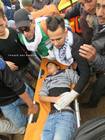
Israeli soldiers shot, on Friday morning, seven Palestinians, including a young woman, in various parts of the besieged Gaza Strip, just as the Palestinians started the nonviolent processions on their lands, hundreds of meters away from the border fence, in several parts of the coastal region.
Medical sources said the soldiers shot three Palestinians in the al-Boreij refugee camp, in central Gaza Strip, one in Rafah, in southern Gaza, and three others in Jabalia, in the northern part of the coastal region.
The Israeli attack came just as the nonviolent processions were starting in the Gaza Strip, while the Palestinians were hundreds of meters away from the border fence.
On Thursday evening, the Palestinians installed tents 700 meters away from the fence, east of Gaza city, while medics installed mobile clinics, especially since the army is preparing to use live ammunition against the nonviolent protesters.
It is worth mentioning that the army infiltrated cellular networks in Gaza, especially phones owned by organizers of the processions, and tried to provide false information regarding places of protests.
Earlier on Friday morning, the soldiers fired tank and artillery shells at Palestinian farmers, east of the Al-Qarara area, east of Khan Younis, in the southern part of the Gaza Strip, killing one, identified as Omar Wahid Nasrallah Sammour, 27, and seriously wounding another.
The fatal Israeli attack, and the injuries, came shortly after the Israeli military, and the political leadership in Tel Aviv, have decided on “shoot to kill orders” against Palestinians who breech, or even approach the border fence.
The Israeli Cabinet also decided to significantly increase military deployments, in addition to using live fire and shoot to kill orders “if the Palestinians breach (or approach) the security fence” in the besieged coastal territory.
On Thursday evening, the soldiers shot seven Palestinians, near border areas east of Khan Younis, and Gaza city.
Medical sources said the soldiers shot three Palestinians in the al-Boreij refugee camp, in central Gaza Strip, one in Rafah, in southern Gaza, and three others in Jabalia, in the northern part of the coastal region.
The Israeli attack came just as the nonviolent processions were starting in the Gaza Strip, while the Palestinians were hundreds of meters away from the border fence.
On Thursday evening, the Palestinians installed tents 700 meters away from the fence, east of Gaza city, while medics installed mobile clinics, especially since the army is preparing to use live ammunition against the nonviolent protesters.
It is worth mentioning that the army infiltrated cellular networks in Gaza, especially phones owned by organizers of the processions, and tried to provide false information regarding places of protests.
Earlier on Friday morning, the soldiers fired tank and artillery shells at Palestinian farmers, east of the Al-Qarara area, east of Khan Younis, in the southern part of the Gaza Strip, killing one, identified as Omar Wahid Nasrallah Sammour, 27, and seriously wounding another.
The fatal Israeli attack, and the injuries, came shortly after the Israeli military, and the political leadership in Tel Aviv, have decided on “shoot to kill orders” against Palestinians who breech, or even approach the border fence.
The Israeli Cabinet also decided to significantly increase military deployments, in addition to using live fire and shoot to kill orders “if the Palestinians breach (or approach) the security fence” in the besieged coastal territory.
On Thursday evening, the soldiers shot seven Palestinians, near border areas east of Khan Younis, and Gaza city.
